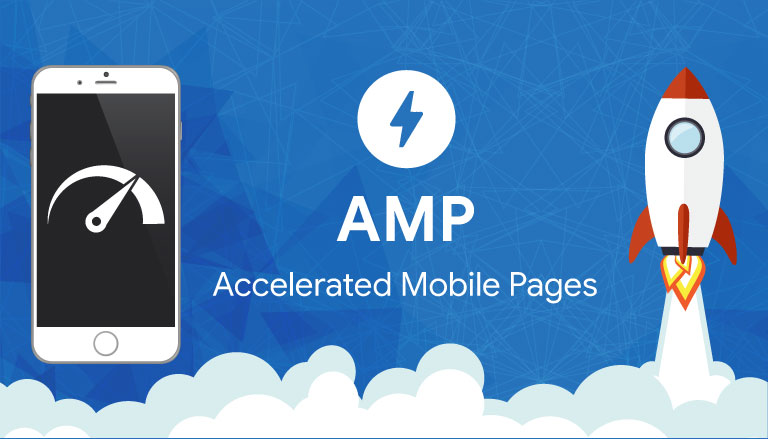Introduction
In the age of mobile-first web experiences, Accelerated Mobile Pages (AMP) stand out as one of the most significant innovations for improving website speed, enhancing SEO, and boosting user retention rates. AMP, an open-source project pioneered by Google and various technology partners, offers a streamlined framework for creating mobile-optimized web pages that load almost instantaneously. This speed advantage not only delivers a superior user experience but also leads to tangible improvements in search visibility, user engagement, and website profitability.
What is AMP?
AMP is specifically designed to eliminate performance bottlenecks commonly encountered on mobile web pages. By enforcing strict guidelines over HTML, CSS, and JavaScript, AMP cuts out resource-heavy elements and prioritizes critical content so users receive the information they want nearly instantaneously.
Core features of AMP:
- AMP HTML: A subset of standard HTML, stripped of slow-loading or unnecessary elements, ensuring lean and clean markup.
- AMP JS: Restricts custom JavaScript and manages asynchronous loading, avoiding performance issues.
- AMP Cache: Google’s proxy-based CDN caches AMP content and delivers it instantaneously from servers closest to the user.
Why Speed Matters
The mobile user expects instant gratification—pages that take more than three seconds to load prompt more than half of users to abandon ship. AMP helps address this pain point by making pages load up to 10 times faster than traditional web pages, even under unreliable network condition.
| Speed Factor | AMP Impact | Benefit |
|---|---|---|
| Page Load Time | AMP typically loads in <1 second | Higher retention, lower bounce |
| Bandwidth Use | Uses one-tenth the data | More accessible, data savings |
| Device Support | Responsive across devices | Universal reach |
AMP and Mobile SEO
Mobile SEO—the tailoring of websites to rank higher on mobile search—relies heavily on page speed, content accessibility, and user experience. AMP addresses these pillars directly with the following effects:
- Boosted Search Rankings: While AMP itself isn’t a direct ranking factor, its optimization for speed and user experience aligns closely with Google’s Core Web Vitals—leading to improved performance in mobile search results.
- Highlighted Placement: AMP pages have historically enjoyed favorable placement, such as the “Top Stories” carousel and special lightning bolt indicators, attracting more visibility and higher click-through rates.
- Reduced Bounce Rates: The faster a page loads, the less likely a visitor is to leave before interacting, driving up engagement and session duration.
- Enhanced Core Web Vitals: AMP makes it easier to meet KPIs such as Largest Contentful Paint (LCP), First Input Delay (FID), and Cumulative Layout Shift (CLS), which are crucial for search rankings.
User Retention and Conversion
Retaining and converting users is critically linked to their first impression—which is often shaped by how quickly content loads. AMP enables:
- Smooth Browsing Experiences: With faster load times and content prioritization, AMP keeps users engaged and encourages them to explore more of the site.
- Consistent Performance Across Devices: AMP pages are designed to be reliable regardless of device, network, or browser—minimizing friction for a diverse audience.
- Lower Bounce, Longer Sessions: Improved speed and usability result in users staying longer and interacting more deeply with site content.
- Improved Conversion Rates: With more visitors staying engaged, businesses see a natural uplift in lead generation, e-commerce conversions, and ad revenue.
Technical Breakdown: How AMP Maximizes Speed
AMP delivers rapid performance through several architectural strategies:
- Stripped-down HTML & Limited JavaScript: AMP forbids many elements (like complex forms, bulky multimedia, custom JS), allowing only lightweight, approved components that guarantee performance. Custom scripts run in sandboxed environments, eliminating delays.
- Asynchronous Loading: Every element is loaded asynchronously, meaning nothing on the page blocks rendering or holds up the user experience.
- Resource Prioritization: AMP forces the browser to prioritize essential content (such as text and imagery), while postponing third-party scripts, ads, or analytics until the core page is usable.
- Lazy Loading: Non-critical content, especially images and media, only loads as users scroll, dramatically improving the perceived loading speed.
- Pre-rendering and Caching: AMP documents are cached and pre-rendered by platforms like Google and Bing, making delivery instantaneous when accessed through search or social feeds.
Implementation Best Practices
To leverage AMP’s advantages while minimizing limitations, web developers and marketers should:
- Pair AMP with Canonical Pages: Use rel=”amphtml” on the main site, and rel=”canonical” on AMP pages, to signal content relationships and avoid duplicate content problems.
- Adopt Component-First Design: Use AMP’s approved components for multimedia, forms, and other interactive content.
- Monitor Analytics Separately: Since AMP restricts traditional JS analytics, using AMP-compatible analytics is a must for tracking user behavior accurately.
- Regularly Audit AMP Pages: Check for validation errors, broken components, or slow third-party integrations that might compromise the AMP benefits.
Limitations and Criticisms
While AMP provides clear speed and SEO benefits, it does come with trade-offs:
- Reduced Design Flexibility: Some advanced features, custom fonts, animations, complex forms, or third-party plugins may be unsupported or require workarounds.
- Dependency on Google Cache: The reliance on the AMP Cache can create a dependency that some webmasters find uncomfortable, as it shifts some control to Google and may raise data privacy concerns.
- Analytics Constraints: Only basic engagement metrics are available unless advanced, AMP-compliant analytics solutions are implemented.
- Evolving SEO Benefits: Google has shifted toward Core Web Vitals and overall page experience in ranking, meaning AMP is no longer required for certain search features but still offers significant indirect advantages due to speed and experience improvements.

AMP vs. Responsive Design
| Aspect | AMP | Responsive Design |
|---|---|---|
| Speed | Near-instant (<1s) | Varies with page complexity |
| Design Flexibility | Limited, strict guidelines | Full creative control |
| SEO Benefit | High (esp. for content/news) | Also strong with optimization |
| Implementation Effort | Moderate (new framework, limitations) | Often built into modern frameworks |
| Analytics | AMP-compliant tools only | Full suite |
Case Studies and Results
- News Publishers: Organizations like Washington Post and other high-traffic publishers saw instant gains in page visibility, click-through rate, and overall retention, benefiting especially from Top Stories carousel placement.
- E-commerce: Product pages built with AMP recorded lower bounce rates and higher conversion rates by reducing friction at every step of the user journey.
- Small Businesses: AMP makes it feasible to deliver state-of-the-art mobile experiences without bloated development costs or complex hosting arrangements.
Future of AMP in Web Development
The focus on performance, usability, and accessibility continues to drive innovations in mobile web technology. As Google and the broader web ecosystem evolve toward broader signals like Core Web Vitals, AMP remains a powerful means for:
- Ensuring near-instant load times for all users, everywhere.
- Achieving and maintaining peak mobile SEO performance by aligning with user experience-centric ranking factors.
- Boosting retention, conversion, and brand loyalty by meeting (and exceeding) modern user expectations for mobile speed and accessibility.
Conclusion
Adopting Accelerated Mobile Pages (AMP) is one of the most reliable strategies for maximizing mobile SEO and user retention in today’s competitive digital landscape. By guaranteeing lightning-fast load times, reducing bounce rates, and improving mobile accessibility, AMP directly addresses the core challenges faced by businesses aiming to serve ever more demanding mobile audiences. While it imposes certain design and technical constraints, the tangible benefits for SEO, user engagement, and conversion rates make AMP a smart choice for content publishers, e-commerce brands, and anyone invested in digital growth. To future-proof web assets and capitalize on the shift towards mobile-first experiences, embracing AMP principles—or at minimum, their focus on speed and usability—is a strategic imperative for lasting success.





